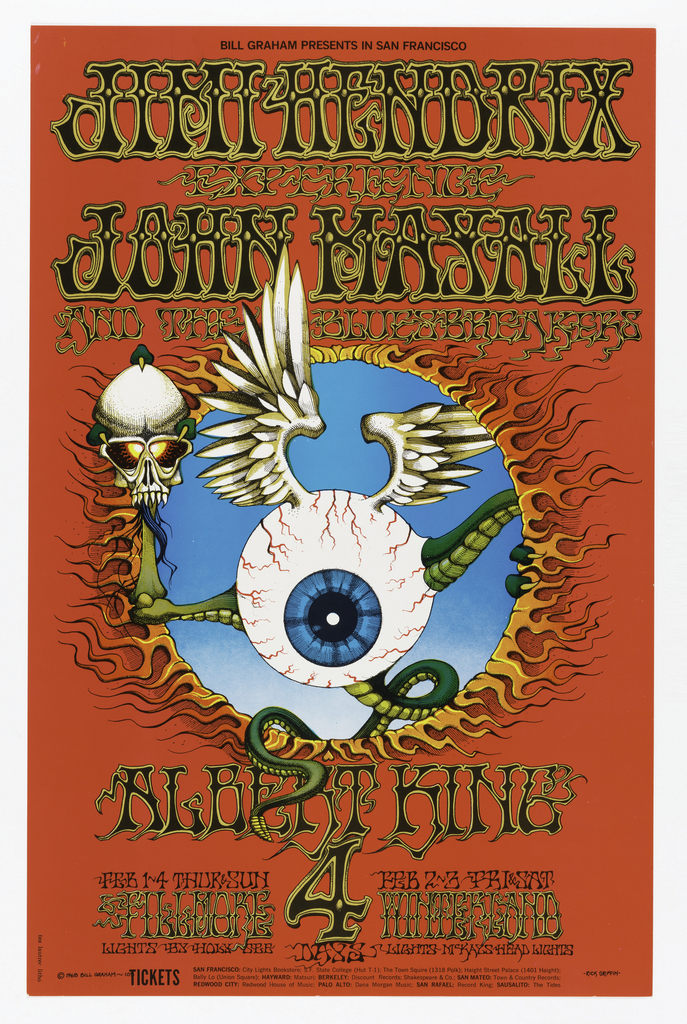The 1967 “Summer of Love” in San Francisco ushered in a wave of music lovers, rock bands, and graphic artists. Psychedelia drifted through the air and inspired the creation of free-form, vibrant compositions in all creative fields. Concert posters became the relics of the San Francisco music scene, created to promote music and dance venues that featured the most famous rock bands of the 1960s and 70s. One of the leading printers of the era was Tea Lautrec Litho, founded by Levon Mosgofian in 1967. Mosgofian named his business after the foremost French printmaker of the Art Nouveau period, Henri de Toulouse-Lautrec, who gained recognition for his playful, bold posters that promoted Paris nightlife at the end of the 19th century. Tea Lautrec Litho distinguished itself from other local printers by collaborating closely with the artists and band managers. The artists at the studio included the “Big Five” of rock poster art: Rick Griffin, Alton Kelley, Stanley Mouse, Victor Moscoso, and Wes Wilson.[1] Each of these designers had their own distinct style, but they shared a proclivity for bright colors and chaotic layouts.
Cooper Hewitt has several Tea Lautrec Litho posters in its collection, but one of its most well-known images is Rick Griffin’s Jimi Hendrix Experience, an offset lithograph poster from 1968. The nearly illegible, undulating text spells the name of the bands performing at the iconic Fillmore: the Jimi Hendrix Experience, John Mayall and the Bluesbreakers, and Albert King. At the center of the poster is a bloodshot, winged eyeball with reptilian limbs climbing through a hole in the deep red foreground. The outline of the cut-out emits orange and yellow flames, as though the red page has been burned through for the eyeball to enter. In its right claw, the figure holds up a skull head, an allusion to the vanitas symbol of mortality. The fluid, electric lettering echoes the mercurial flames, alluding to the energetic, riotous music featured at the concert. Griffin’s adventurous and shocking composition reveals the eclectic aesthetic of the psychedelic movement and San Francisco’s thirst for expression and experimentation.
Lily Gildor is a candidate in the MA History of Design and Curatorial Studies program offered at Parsons The New School of Design jointly with Cooper Hewitt, Smithsonian Design Museum. She is a Master’s fellow in the Drawings, Prints and Graphic Design department.
[1] “Tea Lautrec Litho,” FAMSF Explore the Art, April 22, 2016, https://art.famsf.org/tea-lautrec-litho.
